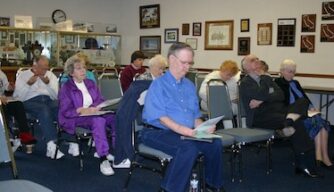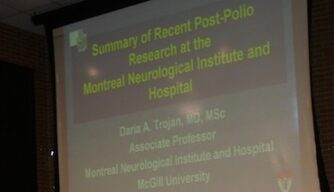
Meetings

2020 Meeting Schedule
Saturday March 28th
Informal lunch/snack/pie meeting
Marie Callender’s 13252 Brookhurst St. Garden Grove CA
See Map Page
Sunday May 17th
DR PERLMAN PRESENTS
LASTEST PPS RESEARCH AND POLIO SURVIVOR MEDICAL CARE
Villa Park City Council Chambers 17855 Santiago Blvd Villa Park CA
See Map Page
Please donate to Polio Survivor Association Support Groups 12720 La Reina Avenue Downey CA 90242


-
Get the 2020 Medicare Scoop Saturday November 9th!...
Nov 3rd, 2019 | Comments Off on Get the 2020 Medicare Scoop Saturday November 9th!
-
Dr. Perlman returns Sunday May 19th
Mar 17th, 2019 | Comments Off on Dr. Perlman returns Sunday May 19th
-
Final Oranger County Newsletter
Nov 21st, 2018 | Comments Off on Final Oranger County Newsletter
-
Share ideas on little PPS things and MUST DISASTER TO GO ITEMS...
Aug 7th, 2018 | Comments Off on Share ideas on little PPS things and MUST DISASTER TO GO ITEMS
-
New Meeting Location
Aug 7th, 2018 | Comments Off on New Meeting Location
-
Are you prepared for earthquakes, fires, or flooding?...
Jan 26th, 2018 | Comments Off on Are you prepared for earthquakes, fires, or flooding?
-
View full slide presentation by Diana Guth
Sep 28th, 2017 | Comments Off on View full slide presentation by Diana Guth



Post Polio Info

Questions for people experiencing excessive fatigue, new weakness or new pain:
✍ Are you or someone you know experiencing a change which makes it exhausting to complete your normal work or perform normal living tasks? Do you have new or increased pain which you can’t explain?
✍ Did you or someone you know have polio?
✍ Did you or someone you know ever have temporary paralysis in one or more limbs, connected with a high fever or flu-like symptoms?
✍ Did an illness ever leave you or someone you know with some permanent weakness?
✍ Did an illness ever leave you or someone you know with permanent, but maybe minor, loss of muscle (atrophy) in one or more limbs?
Fatigue, weakness, and pain can be caused by a variety of things. Good primary care doctors will search for the causes and recommend treatments and changes in living. This might require referral to an orthopedist, a podiatrist, a neurologist, a physiatrist (Physical Medicine and Rehabilitation), a pulmonologist or a rheumatologist. If you or someone you know answers yes to any of the questions above, and once all other possible causes for the new pain and fatigue have been ruled out, your physicians should consider post-polio syndrome (PPS).
The late effects of polio have become clear in the past twenty-five years It is also clear that many people had undiagnosed polio which may have manifested as a high fever, temporary paralysis and minor to moderate muscle loss which you are someone you know “has just lived with”. Polio killed in the thousands. The remarkable thing is that polio survivors generally “recover” and go on to lead productive lives, sometimes in very physical occupations. Surviving muscle motor neurons sprout out to take over the work of the motor neurons destroyed by the polio virus. Yet 20 to 50 years after the initial polio attack many polio survivors experience dramatic new weakness and overwhelming fatigue. Sprouted “replacement” motor neuron cease to function due to all the extra work they had been doing to allow the survivor to “recover”. New weakness and pain result, which may occur in parts of the body which the survivor considered untouched by the polio virus. It is outright shocking to someone who didn’t even know he or she had had polio. This is post-polio syndrome (PPS).
It is important to note that polio survivors coming from outside of the USA might be as much as 40 years younger than polio survivors growing up here. The US polio eradication date was 1967. Eradication was decades later in parts of Latin America; and polio is still not eradicated in parts of Asia and Africa. Logically, more immigrants means more polio survivors with PPS who are not aware that they have it.
There is no cure for PPS and no medicines have yet been approved to treat PPS. Yet it is possible to live well with PPS with the guidance of physicians and physical therapists who have been trained in polio. Sometimes braces and other assistive devices are needed, but everyone with PPS has to undergo major lifestyle changes to prevent going into irreversible decline.
The Post-Polio Support Group of Orange County has been active since 1989. Someone with PPS does not have to go it alone. Please email Priscilla Hiers at prisofoc@aol.com or call her at 714-968-1675.



 Post-Polio Support Group of Orange County (CA) was formed by polio survivors in 1989. Our primary goal is to provide mutual support in facing the challenges of the late effects of polio and Post-Polio Syndrome. We are an 100% volunteer organization and all of our funds come from individual contributions. In conjunction with the Rancho Post Polio Support Group we provide over 500 readers with a monthly newsletter. We conduct educational meetings ever other month. We have members who have volunteered for phone support and to provide personal contact with polio survivors struggling with the many complexities of living with PPS. Our mission is to ensure that every polio survivor in or in the vicinity of Orange County has the opportunity to learn about the late effects of polio, find physicians and therapists who understand polio, and know that our group is here for support.
Post-Polio Support Group of Orange County (CA) was formed by polio survivors in 1989. Our primary goal is to provide mutual support in facing the challenges of the late effects of polio and Post-Polio Syndrome. We are an 100% volunteer organization and all of our funds come from individual contributions. In conjunction with the Rancho Post Polio Support Group we provide over 500 readers with a monthly newsletter. We conduct educational meetings ever other month. We have members who have volunteered for phone support and to provide personal contact with polio survivors struggling with the many complexities of living with PPS. Our mission is to ensure that every polio survivor in or in the vicinity of Orange County has the opportunity to learn about the late effects of polio, find physicians and therapists who understand polio, and know that our group is here for support. 


